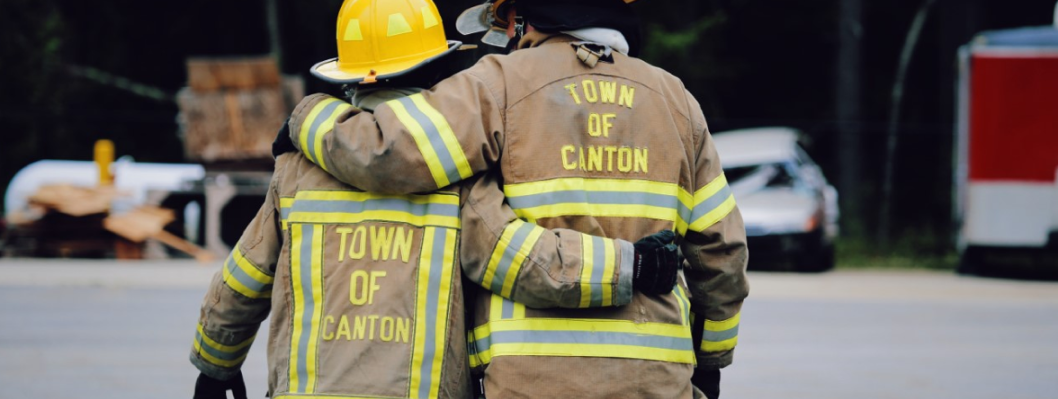« Back to Results
Emergency Medical Technician
Buckhall Vol Fire Dept Co #16
7190 Yates Ford Rd
Manassas, VA 20111
703-368-0859
Description
The EMT may function alone or as a member of a multimember team. Tasks, which the EMT may perform, include the following:
Receive calls from a dispatcher, verbally acknowledge the call, read road maps, assist in the identification of the most expeditious route to the scene, and observe traffic ordinances and regulations enroute to and from the emergency scene.
Upon arrival at the scene, insure the vehicle is parked in a safe location; perform a size-up to determine scene safety, mechanism of injury or illness, determine the total number of patients, and request additional help if necessary.
In the absence of law enforcement, create a safe environment for the protection of the injured and those assisting in the care of patient(s).
Determine the nature and extent of illness or injury, take pulses, blood pressure by auscultation palpation, visually observe changes in skin color, and establish a priority for emergency care. Based on assessment findings, render emergency care to adults, infants, and children.
Establish and maintain an airway, ventilate patients, perform cardiac resuscitation, use automated external defibrillators, provide prehospital emergency care of single and multiple system trauma such as controlling hemorrhage, treatment of shock (hypoperfusion), bandaging wounds, and immobilization of painful swollen and deformed extremities.
Manage medical patients to include assisting in childbirth, management of respiratory, cardiac, diabetic, allergic, behavioral and environmental emergencies, and suspected poisonings.
Search for medical identification emblems, bracelets, or cards that provide emergency care information. Additional care is provided based on assessment of the patient and obtaining past medical information.
Assist patients with prescribed medications including sublingual nitroglycerine, epinephrine auto injectors, and hand-held aerosol inhalers.
Administer oxygen, oral glucose, and activated charcoal.
Reassure patients and bystanders by working in a confident, efficient manner and avoid mishandling patients and undue haste while working expeditiously.
Where extrication is required, assess the extent of injury and give all possible emergency care and protection to the patient. Use recognized techniques and equipment to remove patients safely.
Radio dispatchers for additional help as necessary. Following extrication, provide additional medical care and triage injured victims in accordance with standard emergency procedures.
Comply with regulations on the handling of crime scenes and prehospital death by notifying appropriate authorities and arrange for protection of property and evidence.
Carry and lift the stretcher, placing it in the ambulance and see that the patient and stretcher are secured. Continue care enroute to the appropriate facility.
Determine the most appropriate facility for patient transport unless otherwise directed by medical control. Report the nature and extent of injuries, the number of patients being transported, and the destination of patients to ensure prompt medical care in accordance with local protocols.
Observe and reassess the patient enroute, and administer care as directed by medical control. Assist with lifting and moving the patient and appropriate equipment from the ambulance into the emergency facility.
Report verbally and in writing, observations and emergency treatment given to the patient, at the scene and in transit, to the receiving staff for record keeping and diagnostic purposes. Upon request, provide assistance to the receiving facility staff.
After completion of the call, restock and replace care supplies, clean all equipment following appropriate decontamination and cleaning procedures, make careful examination of all equip ment to ensure availability of the ambulance for the next call. Maintain the ambulance in an efficient operating condition.
Attend continuing education and refresher training programs as required by employers' medical direction and/or the certifying agency.
Meet qualifications within the functional position description of the EMT.
Receive calls from a dispatcher, verbally acknowledge the call, read road maps, assist in the identification of the most expeditious route to the scene, and observe traffic ordinances and regulations enroute to and from the emergency scene.
Upon arrival at the scene, insure the vehicle is parked in a safe location; perform a size-up to determine scene safety, mechanism of injury or illness, determine the total number of patients, and request additional help if necessary.
In the absence of law enforcement, create a safe environment for the protection of the injured and those assisting in the care of patient(s).
Determine the nature and extent of illness or injury, take pulses, blood pressure by auscultation palpation, visually observe changes in skin color, and establish a priority for emergency care. Based on assessment findings, render emergency care to adults, infants, and children.
Establish and maintain an airway, ventilate patients, perform cardiac resuscitation, use automated external defibrillators, provide prehospital emergency care of single and multiple system trauma such as controlling hemorrhage, treatment of shock (hypoperfusion), bandaging wounds, and immobilization of painful swollen and deformed extremities.
Manage medical patients to include assisting in childbirth, management of respiratory, cardiac, diabetic, allergic, behavioral and environmental emergencies, and suspected poisonings.
Search for medical identification emblems, bracelets, or cards that provide emergency care information. Additional care is provided based on assessment of the patient and obtaining past medical information.
Assist patients with prescribed medications including sublingual nitroglycerine, epinephrine auto injectors, and hand-held aerosol inhalers.
Administer oxygen, oral glucose, and activated charcoal.
Reassure patients and bystanders by working in a confident, efficient manner and avoid mishandling patients and undue haste while working expeditiously.
Where extrication is required, assess the extent of injury and give all possible emergency care and protection to the patient. Use recognized techniques and equipment to remove patients safely.
Radio dispatchers for additional help as necessary. Following extrication, provide additional medical care and triage injured victims in accordance with standard emergency procedures.
Comply with regulations on the handling of crime scenes and prehospital death by notifying appropriate authorities and arrange for protection of property and evidence.
Carry and lift the stretcher, placing it in the ambulance and see that the patient and stretcher are secured. Continue care enroute to the appropriate facility.
Determine the most appropriate facility for patient transport unless otherwise directed by medical control. Report the nature and extent of injuries, the number of patients being transported, and the destination of patients to ensure prompt medical care in accordance with local protocols.
Observe and reassess the patient enroute, and administer care as directed by medical control. Assist with lifting and moving the patient and appropriate equipment from the ambulance into the emergency facility.
Report verbally and in writing, observations and emergency treatment given to the patient, at the scene and in transit, to the receiving staff for record keeping and diagnostic purposes. Upon request, provide assistance to the receiving facility staff.
After completion of the call, restock and replace care supplies, clean all equipment following appropriate decontamination and cleaning procedures, make careful examination of all equip ment to ensure availability of the ambulance for the next call. Maintain the ambulance in an efficient operating condition.
Attend continuing education and refresher training programs as required by employers' medical direction and/or the certifying agency.
Meet qualifications within the functional position description of the EMT.
Volunteer Category: EMT
Requirements
Be a minimum of 17 years of age upon enrollment
Successfully complete certification examination.
Have the ability to hear, read, write, communicate, and interpret instructions in the English language.
Demonstrate competency in handling emergencies using basic life support equipment in accordance with the objectives in the U.S. Department of Transportation National Standard Curriculum for EMT and other objectives identified including having the ability to:
Verbally communicate in person and via telephone and telecommunications; communicate the status of a patient to other EMS providers and hospital staff; and hear via telecommunications, telephone and patient! bystanders voice.
Lift to a height of 33 inches, and carry and balance a minimum of 125 pounds.
Use good judgement and remain calm in high-stress situations.
Read training manuals, books and roadmaps.
Accurately discern street signs and address numbers.
Verbally interview patients, family members, and bystanders and hear their responses.
Document, in writing, all relevant information in prescribed format.
Verbally communicate status of patients to co-workers and hospital staff, and answer all oral questions.
Demonstrate manual dexterity, with ability to perform all tasks related to quality patient care.
Bend, stoop, crawl, and walk on uneven surfaces.
Function in varied environmental conditions such as lighted or darkened work areas, and extreme heat, cold, and moisture.
Successfully complete certification examination.
Have the ability to hear, read, write, communicate, and interpret instructions in the English language.
Demonstrate competency in handling emergencies using basic life support equipment in accordance with the objectives in the U.S. Department of Transportation National Standard Curriculum for EMT and other objectives identified including having the ability to:
Verbally communicate in person and via telephone and telecommunications; communicate the status of a patient to other EMS providers and hospital staff; and hear via telecommunications, telephone and patient! bystanders voice.
Lift to a height of 33 inches, and carry and balance a minimum of 125 pounds.
Use good judgement and remain calm in high-stress situations.
Read training manuals, books and roadmaps.
Accurately discern street signs and address numbers.
Verbally interview patients, family members, and bystanders and hear their responses.
Document, in writing, all relevant information in prescribed format.
Verbally communicate status of patients to co-workers and hospital staff, and answer all oral questions.
Demonstrate manual dexterity, with ability to perform all tasks related to quality patient care.
Bend, stoop, crawl, and walk on uneven surfaces.
Function in varied environmental conditions such as lighted or darkened work areas, and extreme heat, cold, and moisture.
38.731831
-77.4186033

